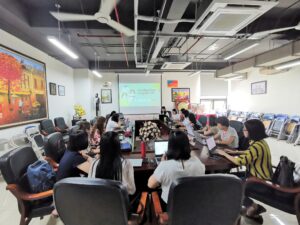In the rapidly evolving world of language services, AI-powered translation and modern Neural Machine Translation (NMT) are often discussed interchangeably. However, they have distinct characteristics and implications for producing high-quality content. Understanding these differences and implementing appropriate measures can significantly impact the effectiveness and accuracy of translations.
Machine Translation (MT) refers to the use of algorithms and linguistic rules to convert text from one language to another. Early MT systems, like rule-based and statistical machine translation, relied heavily on predefined grammar rules and large bilingual text corpora. While these systems improved over time, they often produced literal translations that lacked contextual understanding, leading to inaccuracies and awkward phrasing.
Neural Machine Translation (NMT) is a subset of AI translation that specifically uses neural networks to improve translation quality. NMT systems are designed to learn from vast amounts of data, capturing nuances and context that traditional MT systems might miss. They can understand context, idiomatic expressions, and stylistic nuances, resulting in more natural and accurate translations.
AI Translation encompasses a broader range of technologies and methodologies beyond just NMT. It includes various forms of machine learning, deep learning, and other AI-driven approaches that enhance the translation process. AI translation systems can integrate with other AI technologies, such as natural language processing (NLP) and speech recognition, Sentiment Analysis, Text Summarization, Optical Character Recognition (OCR), Named Entity Recognition (NER), Adaptive Learning Systems, to provide comprehensive language solutions.
Key Differences:
Scope and Integration: While NMT focuses specifically on improving translation quality through neural networks, AI translation includes a wider array of technologies. AI translation systems can integrate NMT with other AI-driven tools, offering more versatile and comprehensive language solutions.
Contextual Understanding: Both AI translation and NMT excel in understanding context and producing more natural translations compared to traditional MT. However, AI translation systems can leverage additional AI technologies to enhance contextual understanding further, such as sentiment analysis and contextual awareness.
Customization and Adaptability: AI translation systems often provide more flexibility in customization and adaptability. They can be tailored to specific industries or domains, incorporating specialized terminology and context. NMT systems, while highly effective, may require additional AI technologies to achieve the same level of customization.
Continuous Learning and Improvement: Both AI translation and NMT benefit from continuous learning and adaptation. However, AI translation systems can incorporate feedback and updates from various AI-driven processes, ensuring a more holistic improvement cycle.
Measures for Ensuring High-Quality AI Translation:
Data Quality and Diversity: The quality of the training data directly impacts the performance of AI translation systems. Using diverse and high-quality bilingual corpora ensures that the AI can learn from varied linguistic patterns and contexts, leading to more reliable translations.
Human-in-the-Loop: Incorporating human expertise remains crucial. Post-editing by professional linguists can refine AI-generated translations, correcting subtle errors and ensuring cultural appropriateness. This hybrid approach combines the efficiency of AI with the nuanced understanding of human translators.
Continuous Learning and Adaptation: AI systems should be regularly updated with new data and feedback. This ongoing learning process helps the AI adapt to evolving language use, industry-specific terminology, and emerging trends, maintaining the relevance and accuracy of translations.
Quality Assurance Processes: Implementing rigorous quality assurance protocols, including peer reviews and automated quality checks, can help identify and rectify errors. These processes ensure that the final output meets the highest standards of accuracy and fluency.
Customization and Specialization: Tailoring AI translation models to specific industries or domains can enhance their effectiveness. Specialized models trained on industry-specific terminology and context can produce more precise translations, particularly for technical, legal, or medical content.
Machine Translation Post-Editing (MTPE): Like Neural Machine Translation (NMT), applying MTPE is essential to ensure high-quality output before publication. MTPE involves a two-step process: light post-editing to make the text understandable and correct major errors, and full post-editing to refine the text for accuracy, style, and fluency. This ensures that the AI-generated translations meet the required quality standards for professional use.
In conclusion, while AI-powered translation offers significant advancements over traditional machine translation, achieving high-quality content requires a strategic combination of advanced technology, human expertise, and continuous improvement processes. By leveraging these measures, including MTPE, organizations can harness the power of AI to deliver accurate, contextually appropriate, and fluent translations.





